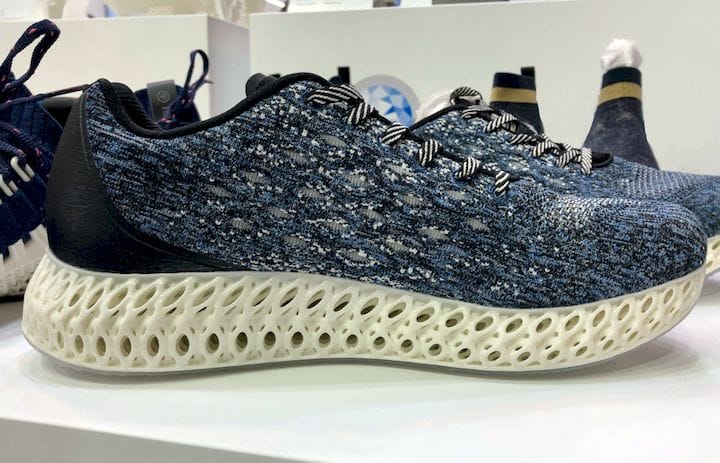![A shoe incorporating a 3D printed lattice-style midsole [Source: Fabbaloo]](https://fabbaloo.com/wp-content/uploads/2020/05/image-asset_img_5eb09f09b0f65.jpg)
3D printing offers the ability to leverage designs in ways not previously possible, but only if the right software is used.
I’ve seen a few examples lately of 3D design that triggered the realization that there are two kinds of 3D designs: sophisticated and, well, not so sophisticated.
Let me explain what I mean.
One of the key capabilities enabled by 3D printing is the ability to produce sparse objects; that is to say, objects that are not quite solid due to void spaces within. This is most often seen by designers attempting to reduce the weight of an object through a skeletal design that provides just enough material to achieve the purpose of the part, and shedding the remainder as excess weight.
It’s a fantastic concept that will surely become a standard manufacturing approach in years to come in almost all industries, but there are good ways to do this, and not so good ways.
This type of design is often seen with a lattice approach, in which a solid internal structure of the object is replaced with a repeating series of interconnected nodes. These highly complex lattices are essentially impossible to produce in any non-3D printing process.
They’re so complex they must be generated mathematically by 3D CAD systems; it would be enormously tedious to do so manually.
If you’ve spent any time examining 3D prints, you will have seen many different lattice implementations. I’ve seen plenty in thermoplastics, metals and even ceramics. But recently I saw one that made me realize something quite important.
Take a look at this shoe design’s side and bottom:
![A shoe with 3D printed lattice midsole [Source: Fabbaloo]](https://fabbaloo.com/wp-content/uploads/2020/05/shoe-lattice-ov-1_result_img_5eb09f0a09456.jpg)
![Interior of the 3D printed midsole [Source: Fabbaloo]](https://fabbaloo.com/wp-content/uploads/2020/05/shoe-lattice-top-1_result_img_5eb09f0a4fbf2.jpg)
And then this shoe design’s side and bottom:
![adidas’ FUTURECRAFT shoe with 3D printed midsole by Carbon [Source: Fabbaloo]](https://fabbaloo.com/wp-content/uploads/2020/05/futurecraftshoeov-1_result_img_5eb09f0a98afa.jpg)
![The adidas FUTURECRAFT shoe bottom [Source: Carbon]](https://fabbaloo.com/wp-content/uploads/2020/05/carbonlatticeshoeov_result_img_5eb09f0b2bfa1.jpg)
Notice the difference?
The first pair of images show what appears to be a very regular repeating lattice pattern. This will of course eliminate a considerable amount of material and thus reduce the weight of the shoe in total.
The second pair of images show a varying pattern of lattice, in which the lattice appears to match the functional requirements for different zones within the shoe. The ball of the foot zone, for example, is likely to undergo twisting motions as the wearer pivots. It seems that this shoe design’s lattice has accounted for that function in that zone of the shoe.
Similarly, the side view of the second pair shows a varying lattice structure that appears to be designed to provide necessary strength during acceleration.
Meanwhile the first design doesn’t seem to incorporate any of these more sophisticated lattice designs in the shoe. It’s just a regular lattice being repeated, with a bit of twist.
After seeing this, which is the right design? I think you now understand what I’m getting at.
There are “good” 3D designs, and “not so good” 3D designs. They may, at first glance, appear to leverage 3D printing, and I suppose they do. But in reality they’re leaving a lot on the table.
This does require sophisticated 3D CAD tools, obviously. I’m told Carbon, for example, have invested heavily in the development of such lattice generation tools precisely so their clients can fully leverage 3D printing technologies. It may be one of their strategic advantages in the market.
It may also be that 3D print firms not offering or partnering with sophisticated 3D CAD design tools may be left behind by those that do.
Like any engineering design, the structure must best match the requirements. Let’s just make sure the requirement isn’t simply: “make it look like a fancy 3D print”.











No one seems to offer collaborative 3D printing modes on dual extrusion devices. We explain why this is the case.